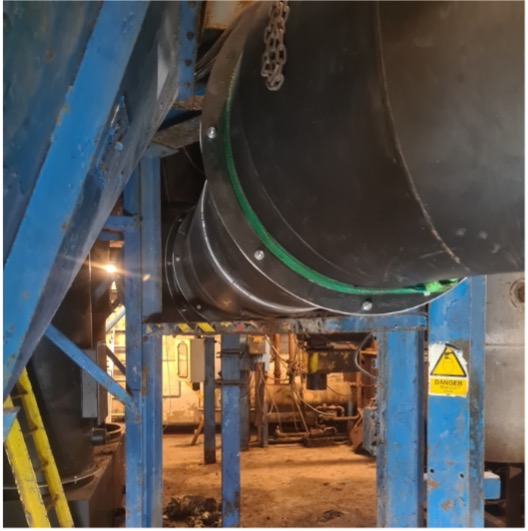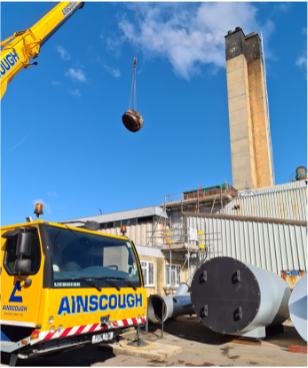Project SRCL HH – GSA (Gas Suspension Absorber) Reactor Tower
The original enquiry was to come to site and take some volumetric readings and to measure up to replace the lime reactor tower which was part of a waste incineration plant at Hillingdon hospital.
The plant had been recently taken over and was being refurbished as the plant was in quite a poor condition.
Our client wanted a like for like design of the reactor tower and associated ducting, and as it had been installed over 20 years ago there was minimal information to go off.
FDL were given a design order to go to site and measure the existing reactor tower and ducting with a view to replicating it.
The site was very tight which made accessing the tower to measure very difficult. The existing reactor tower was supported by an internal steelwork which was to be re-used.

Once the reactor tower had been measured, we took some volumetric readings to ensure that the existing design and duct sizes were correct.
We measured 11,700 cfm or 19,890Nm3/hr @ 210°c which gave an actual air volume of 33,004Am3/hr.

The existing ductwork from the boiler to the reaction tower was Ø750 which gave a duct velocity of 21m/s. The rectangular duct between the ducting and reaction tower is 826 x 616 giving a duct velocity of 18m/s. The duct then travels up the reaction tower which is again Ø750 then opens out to Ø2000 which slows the velocity to 3m/s to provide turbulence and a good reaction time for the lime.

To ensure the new reactor tower and associated ductwork would fit we modelled the existing support structure and some of the internal beams for a datum point.
We designed the new reactor tower in 4 sections to make the installation easier as space and access on site was minimal. The reactor outlet which connected to the filter inlet had to be made short as we couldn’t access the existing filter inlet on site.
This was to be measured, manufactured, and fitted once the existing reactor tower had been removed.

Once the design has been completed, we were awarded the fabrication and installation which came via a third party which were the main contractor overseeing the refurbishment of the overall plant.
The reactor tower was then insulated off site to minimise the scaffold requirements and meant we only had to flash over the flanges once it had been installed.
To avoid any damage being cause to the insulation and cladding we fabricated supports for transport.

The removal and installation was technically challenging due to accessibility and site layouts. We needed to work with the main contractor and provide detailed Gantt charts, lifting plans and liaise with the other contractors on site.
The location of the site at the hospital meant that where the crane needed to be sited we had to get the staff car park closed and work over the weekend to remove the existing reactor tower and install the new one. The other hurdle was all the removal and installation had to be carried out between the time of 8:00am and 18:00pm due to it being a residential area.
A week before the crane was booked to be on site, we used a local scaffolding company to erect a scaffold around the existing tower and ducting.
Once all the scaffold was in place, we removed the existing ductwork and all the insulation and cladding around the reactor. We then made partial cuts to the tower ready to make final cuts once the crane had the weight to be able to remove the reactor tower in sections
The new ductwork was then installed.



The main contractor then removed part of the roof which was then scaffolded out for access. On the day of the removal the contractor provided 2 40ft skips so the existing reactor tower could be craned straight into the skips and removed from site before the car park needed to be re-opened on the Monday.


Whilst the crane was on site the main contractor had asked if we could remove a condenser which was being replaced and to avoid the cost of having to get another crane on site, we were able to help them out.
We then lifted the new reactor tower into position and as you can see this was very tight.
Once the tower had been installed, we had the ductwork insulated and clad to maintain a surface temperature of 55°c.




Our recent Projects
An empty warehouse is always a welcome place to start a project. This is because we have a blank canvas with which to design an ideal layout for a flue gas treatment plant. Once installed, our system cleans the gases from a waste boiler and waste infeed plant and will allow the end user to stop transporting waste around the country and manage it locally, save on transport costs and produce some electricity too.


